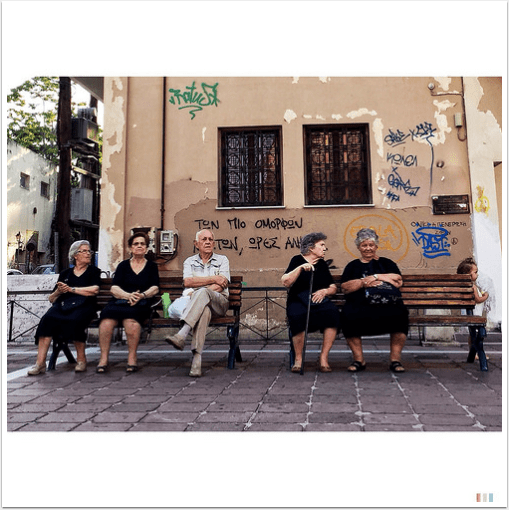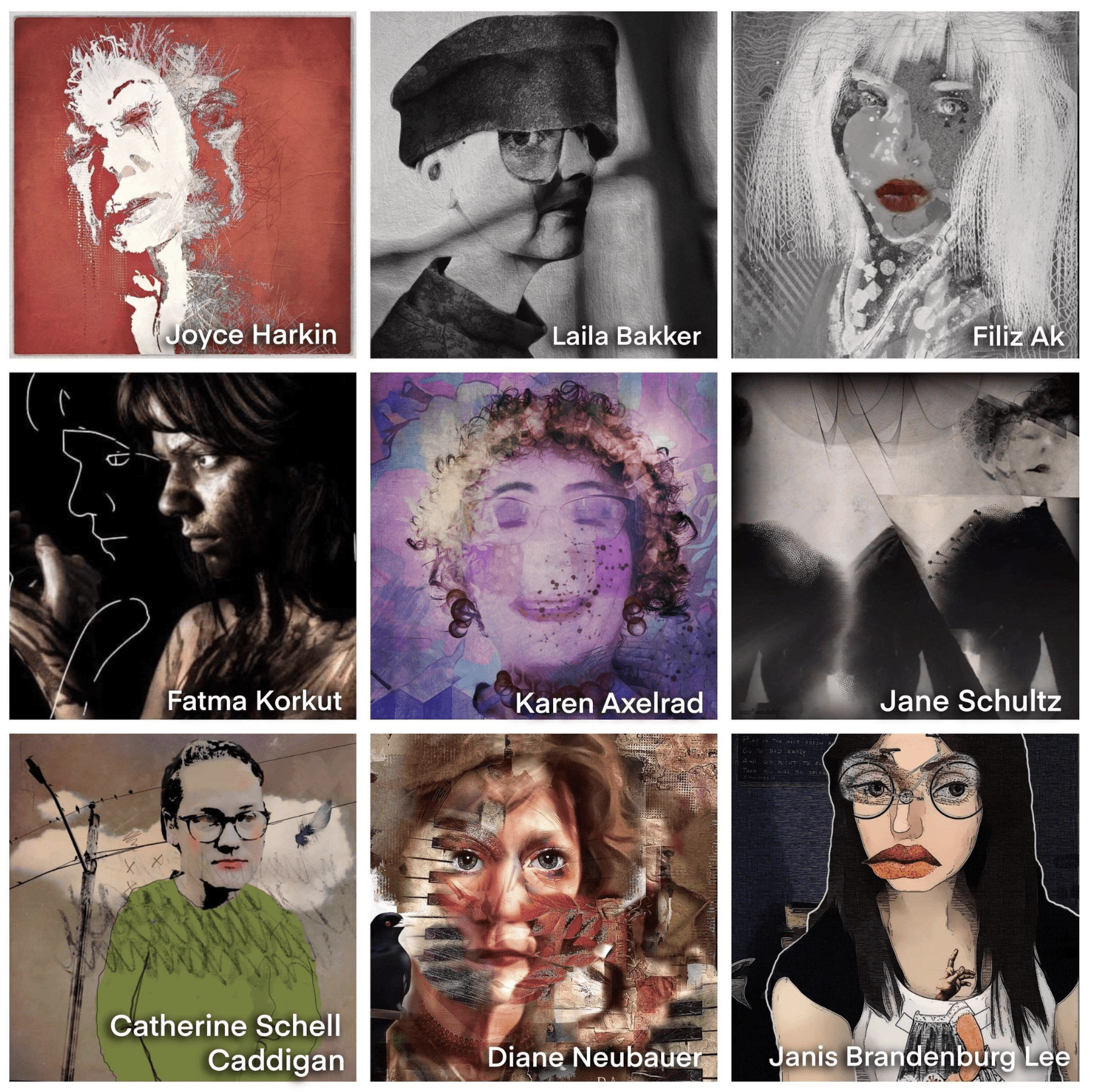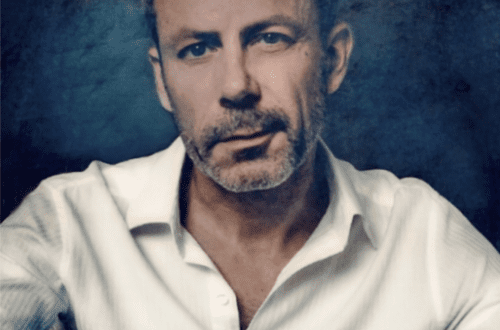Portrait of an Artist Interview with Andrew B White by Jennifer Bracewell
We are delighted to publish our second Portrait of an Artist interview to this very special column, edited by Jennifer Bracewell. This is an outstanding interview with Andrew B White, filled with great images too.
(We also have a dedicated Facebook group set up for this Column too – please join us here. Jennifer regularly adds and contributes to this. In addition we have set up a Flickr Group dedicated to this column. We would like you to send all your portraiture here and we will select images for curation and showcases as well as commentary – this is the Flickr Group link).
Don’t miss this fabulous interview, over to you Jen, (foreword by Joanne Carter).
“I have been impressed with Andrew’s work since I first saw it back in 2011. I initially loved his nudes. They were tasteful, beautiful, and thought provoking. Andrew has an eclectic body of work including landscapes, street photography, architecture and portraits. We have had the opportunity to collaborate and I’ve found him to be a humorous, interesting and lovely person all around. He’s a talented musician and designer as well. I wanted to get to know more about him and am thrilled that he agreed to share some of his insights with me..

‘Away From The Looking Glass’ – ©Andrew White
J: What are your earliest memories of photography and/or art?
A: From an early age I was always drawing and making art. The usual stuff that boys do – drawing cars, planes, Star Wars characters. I was certainly one of those kids that was ‘good at art’ and started to get attention for it. My mother is artistic and definitely encouraged me with my art. I started entering coloring competitions when I was around nine years old and ended up winning a string of them (and some pretty good prizes for a kid back then!). I had a pretty good handle on how colors worked together and developed ‘techniques’ I would apply to make my entries stand out from the others (and something I still apply to what I do today). All of these entries were cut out of magazines or newspapers and sent in via mail – totally old school! At one point it looked like my career might eventually be as a cartoonist. As a kid I read a lot of comic books like Tintin and Asterix, the classic Disney comics and “Mad” magazine that my dad would buy. I was never interested in stuff like Spiderman or ‘action’ comics they seemed a bit banal to me. Even at age nine my cartoons were a mix of social commentary combined with my weird sense of humor. At 16 years old I was offered a job as a graphic designer with a small
studio in the pre-computer age where I learnt valuable skills and got paid to be creative.
Photographically, my family had an old ‘box brownie’ camera, which wasn’t used too regularly. In fact it was our only camera up until the late 70s. I got a 110 camera in the early 80s, a compact 35mm later. I never progressed to a SLR due to the cost. In my graphic design job developing bromides in a darkroom on a process camera I learnt all about f-stops, exposure and adding halftones to photographs but this was as close as I got to technically doing anything with a professional camera. I borrowed an SLR on the odd occasion to take experimental shots and I always felt photography was part of my artistic gamut – I just hadn’t had the chance at that point. As a designer I also art directed a lot of photo shoots and worked with some great professional photographers. I was involved in styling, concepts, setting up props, scouting for locations, booking and working with model talent. I learnt quite a bit from these shoots and did most of the post image retouching on the images that started of as scans of transparencies from Hasselblad’s until the digital era started to bypass film. When I got my first camera phone in the mid-2000s I started experimenting with that to take photos and saw the potential in what might be coming. Then the iPhone came along…
I still have the Box Brownie.
J: What have you sacrificed for your art?
A: Sacrifice implies something else has given way for the sake of your art. I have been lucky enough to have worked as a graphic designer for 25 years and made a career out of being artistic. Obviously ‘business’ when combined with ‘art’ can often mean a degree of compromise – one could argue that is a sacrifice. My involvement in music has suffered as a result of running a design business. The design work paid the bills and music had to be slotted in to downtime. I am doing much more music these days and making up for some lost time. My music, design and photography have all started to work together in recent years. Mobile photography allows freedom to create instantly and allows me to keep being creative everywhere and anywhere. This in turn inspires all my other creative outlets.
J: What is it that appeals so much to you about portraiture?
A: You are capturing someone’s persona – his or her image and a representation of who they are (or who you think they are). Not everyone is open to that and when you get the opportunity to shoot a portrait the rewards are great. I admit I am in no way a dedicated portrait artist. In fact I don’t think that any of my photography has a specific discipline. I’m not a street photographer but I take street shoots. I’m not a landscape photographer but I shoot landscapes. So, for me portraiture is a sporadic thing. It’s easy to take photos of buildings or your immediate surroundings but portraits require much more effort. You must having a willing subject and then they need to be comfortable being photographed. While I’ve often used professional models for shoots it’s often the ‘regular’ people that make the best portraits, once you can convince them to have their photo taken. I’m now living in a city where there is more opportunity to photograph people and I’m looking forward to taking advantage of that.

‘Boy’ – ©Andrew B White
J: Why do you think mobile photography and portraiture work so well together?
A: This I think is pretty self-explanatory. You aren’t shoving a big camera in front of someone so there’s less resistance and even awareness that photos are being taken, especially when the shutter sound is disabled. This can make for a more relaxed and natural atmosphere. On the other hand, where a professional model is being shot with a mobile device it can seem quite odd to them! They are used to bright lights, flashes, photography assistants, DSLRs clicking away – lots of hoopla. That can make a model perform and if you take it away it’s out of their usual work zone. This is where you need to build some trust with your subject so that you can shoot without them thinking you’re an amateur hack that doesn’t have a ‘real’ camera. When they see the results they are usually amazed and want to try mobile photography. In that case you end up being both a photographer and an artistic mentor all at once!
J: Tell me about awards and recognition you’ve received.
A: I’ve been involved in the mobile photography scene for a number of years and lucky to be part of many awards, exhibitions and publications; had photos featured on the usual mobile photography websites etc. I’ve had works shown at physical and digital exhibitions in several countries and some success with the likes of the Mobile Photo Awards. Being one of the most recognized mobile photographers from a small country (New Zealand) I received coverage there about my work through interviews and articles. There is so much great work being created on mobile devices these days and I feel proud that my work is considered alongside all of it.

‘Hannah’ – ©Andrew B White
J: Which of your own images are you most proud of and why?
A:I think of all my works equally – I only post or show what I consider meets my idea of a worthy work. There have been a couple of images of mine that have carried through with me and are identified with my mobile photography. The landscape “White Cloud” (a single white cloud reflected in the water a beach), “Happiness In A Dark Place” (an unedited Hipstamatic shot of balloons found on a stairway) and “Floored” (a B&W art-nude shot). These are all images that were defining for me.

‘Mark Slave’ – ©Andrew B White
J: What have been the high points and low points of your career so far?
A: Everything is a high point – taking a photo, making a work. Seeing my work bring appreciated by my peers and having the freedom to create how I want to. I don’t have insane amounts of followers on the platforms I post photos to and I consider that to be a good thing. These people follow me for a reason. While appreciation is nice, my high points aren’t measured in 10,000 ‘likes’ for a photo – they are measured in my connection with the work I have created. It has been very cool to see large physical prints of my mobile photography work hanging in shows in LA and Miami – that’s a definite high. The contact and interaction with the artists involved in the community is very important and I have met many great people through the scene.

‘Melissa’ – ©Andrew B White
J: What would you say the biggest myth is about mobile photography?
A: Of course there are many. I have discussed and commented these on many occasions within groups in the community. The initial negative reactions seem to have quieted down over the last couple of years but the argument that still persists is that mobile photography is not ‘real photography’, seemingly due to technical specs. This implies that ‘real’ photography can only be achieved with a ‘real’ camera operated by a ‘real’ photographer. This is ridiculous, but more than that it does not take in to account that mobile photography could instead be looked at as a ‘genre’ of photography, not an outright replacement for the world of high end DSLR cameras. Neither does it claim to be. Not yet anyway. I would love a high end DSLR to shoot with but the results would look different to my mobile shots for various reasons. We are talking about two different tools, both of which are used to take photographs. Respect needs to go out to the photographers who have learned the skills of traditional photography of course. Just as respect should be given to the skills that mobile photographers have. For instance, an established mobile photographer shouldn’t be denied access from a photo/press area/shoot because they don’t have a DSLR in tow.
No doubt there will be a time where ‘mobile photography’ is an archaic term – while there will still be specialist niches there will be very little differences between a phone and a camera.
J: What/whose work of art would you most like to own?
A: A tough question. I love all types of art and mediums. On my wall, if I had to choose, I would have something by the late New Zealand painter Gordon Walters. His stark, Maori art-inspired graphic work appeals to my visual sense and has a timeless presence to it.
http://www.aucklandartgallery.com/the-collection/browse-artists/1467/gordon-walters

‘Pearl’ – ©Andrew B White
J: What song would work as the soundtrack to your life?
A: Music is a big part of what I do and I have a lot of it! I’ve always liked Canadian artist Jane Siberry’s “The Walking” album with its soundscapes-as-pop-songs, lyrical musings and ‘visuality’. If you could take photos of music this is what you’d get.




3 Comments
brett chenoweth
great work! Great interview Jennifer.
Maryjane Sarvis
Great interview! I’ve always enjoyed Andrew’s work and comments. Very nice to know more about him.
Carolyn Hall Young
Thank you for this thoughtfulness. What a treat!